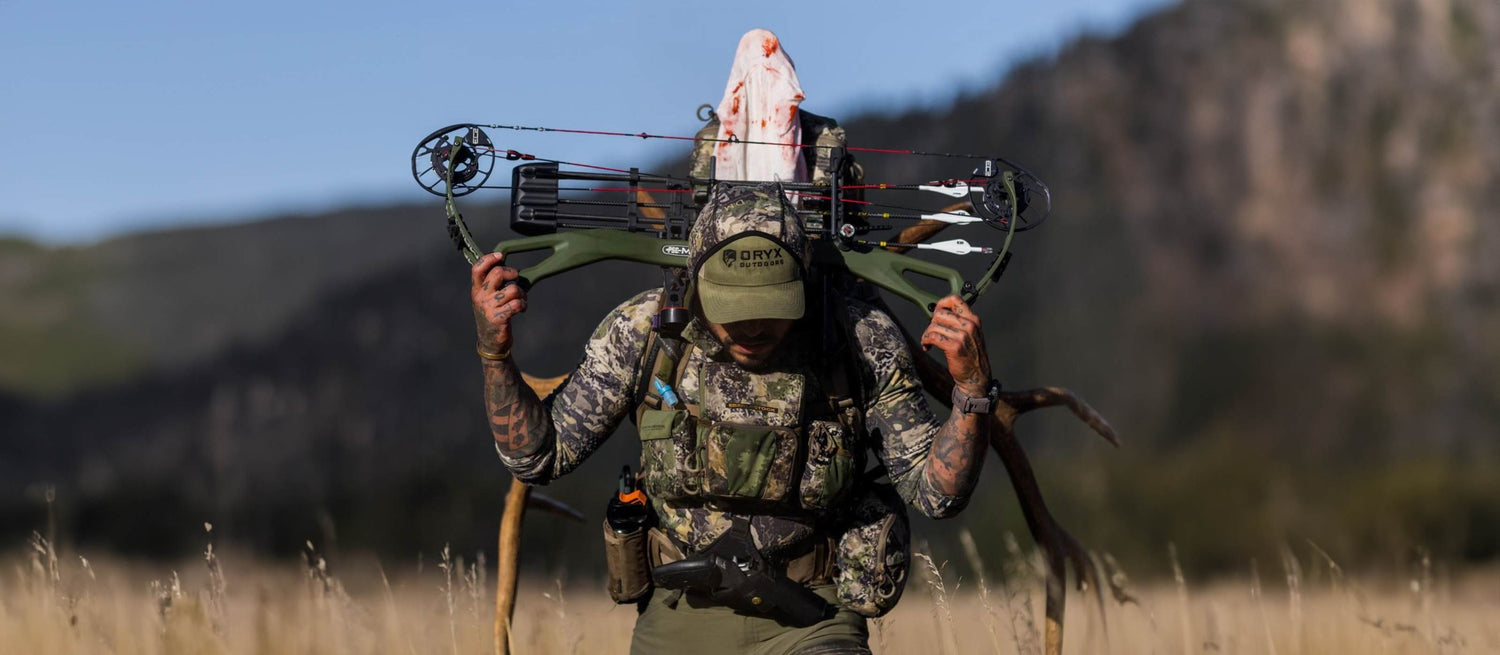Elk season is finally here. After months of training, scouting, and dreaming, the first bugle of the season is about to echo through the mountains. For many hunters, the first 48 hours represent the best window of opportunity. Elk are still moving naturally, they haven’t felt the full pressure of hunters, and the excitement of opening morning fills the air.
But the same energy that makes those days exciting also makes them chaotic. Mistakes happen quickly, and one wrong move can send your chance over the next ridge. Here’s how to navigate the opening days with purpose and precision.
1. Scout Before the Season Opens
If your state regulations allow, arrive in your hunting area a day or two before the opener. Use that time to:
- Glass From Afar: Spend mornings and evenings watching likely basins. Look for cows, calves, and early-moving bulls.
- Check Sign: Fresh rubs, wallows, and droppings confirm elk are nearby.
- Note Pressure: Opening day crowds often gather in obvious spots. Knowing where other hunters are camping helps you plan your own approach.
2. Beat the Opening Morning Rush
Popular trailheads can look like parking lots at sunrise on day one. To avoid the chaos:
- Start Earlier: Leave camp an hour before other hunters typically would. It’s easier to nap mid-day than to recover from bumping elk at first light.
- Take the Long Route: Many hunters stop at the first meadow or ridge. Push farther than most are willing to go.
- Use Alternative Access: Check maps for lesser-known trailheads, walk-in access, or side ridges that don’t show up on “top 10 spots” lists.
3. Hunt the Wind Like a Professional
On opening morning, elk are more responsive — but they’re also more vulnerable to mistakes. The most critical factor? Wind.
- Carry a small wind checker and use it constantly.
- If the breeze shifts, circle wide. It’s better to take extra time than blow out an entire drainage.
- Don’t assume thermals will behave perfectly. Sunlight, shade, and weather can cause sudden shifts.
 4. Call Less, Listen More
4. Call Less, Listen More
Elk are still vocal in the early season, but calling too aggressively can:
- Pull in every hunter within a mile.
- Educate bulls before they’ve even been pressured.
Start subtle. Use soft cow calls, location bugles, or raking. Let the elk tell you how fired up they are. If bulls respond with intensity, ramp up. If they go quiet, back off and shadow them instead.
5. Midday is Your Secret Weapon
Most hunters hike hard at sunrise and are back at camp by 10 a.m. That means the woods grow quiet right when elk often adjust bedding positions.
- Still Hunt: Move slowly through dark timber where elk bed.
- Glass Shady Benches: Cows and calves may shift bedding spots during hot afternoons.
- Ambush Water or Wallows: In warm weather, elk often move mid-day for water.
6. Prepare for a Hot-Weather Pack-Out
If you’re lucky enough to tag out on opening day, there’s a good chance you’ll be packing meat in warm temperatures. Heat is the enemy of good meat care, so preparation is key:
- Kill Kit Ready: Have your game bags, knives, gloves, and paracord ready in your pack — not buried under gear at camp.
- Shade First: Quarter the elk quickly and hang meat in shade or near cool air flows.
- Team Plan: If you’re hunting with partners, divide loads immediately and make a plan for trips.
 7. Stay Flexible, Stay Aggressive
7. Stay Flexible, Stay Aggressive
The biggest mistake opening week hunters make is clinging too tightly to a plan. Elk move fast, pressure shifts herds, and weather can shut down calling. Adaptation is everything.
- If pressure is heavy, move deeper.
- If calling isn’t working, go silent and track fresh sign.
- If a herd vanishes, don’t waste hours in the same spot — relocate and stay aggressive.
8. Mindset: Hunt Hard From the Start
The first 48 hours are a mental test. Excitement will carry you for a while, but fatigue sets in quickly. To stay sharp:
- Break the day into chunks: morning, midday, evening. Focus on one window at a time.
- Celebrate small wins: spotting elk, finding fresh sign, or getting inside 200 yards.
- Remind yourself that elk can appear at any moment. The next 30 minutes could be the one.
Final Thoughts: Always in Pursuit
Opening weekend can be the best chance you’ll have at tagging a bull all season. It’s chaotic, it’s demanding, and it requires both physical grit and mental focus. But if you’re prepared — physically, mentally, and with the right gear — you can capitalize on the energy of those first 48 hours.
So lace your boots, trust your training, and hunt every moment like it’s your only chance. Because in elk country, it just might be.








